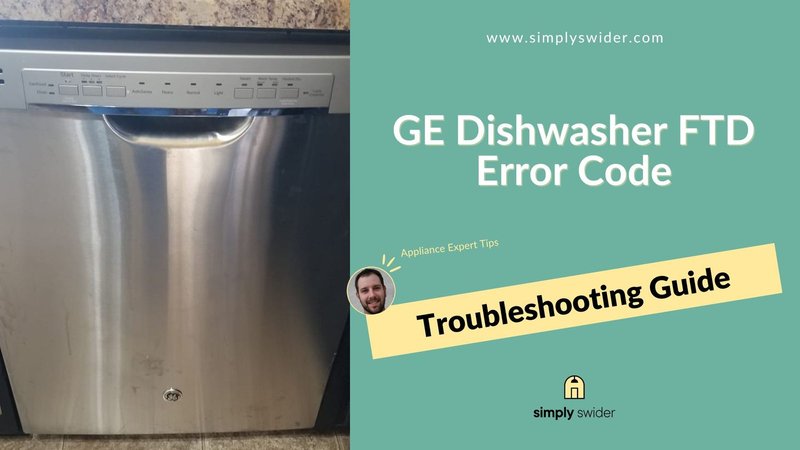
Understanding what Error Code E2 means is like peeling an onion—there are layers to this. Essentially, in a GE dishwasher, this error typically indicates a problem with the drain system. It’s like when your car’s check engine light comes on; it might not mean imminent doom, but it’s important enough to get checked out. Your dishwasher might not be working at its full potential, and ignoring the issue could lead to bigger problems down the line.
What Exactly Is Error Code E2?
Error codes are the appliance’s way of communicating that something’s amiss. When your GE dishwasher gives you an E2, it’s speaking the language of plumbing and mechanics. This code usually points to a drainage issue. Imagine you’re trying to empty a bathtub with a clogged drain; it’s not going to be very effective, right? Similarly, if your dishwasher can’t drain properly, it can’t continue its cycle efficiently.
Now, you might be wondering, “Why does this even matter?” Well, an unresolved E2 error doesn’t just mean dirty dishes. It could lead to water pooling inside the dishwasher, which might spill out, messing with your kitchen floor. Not to mention, stagnant water can be a breeding ground for bad smells and germs. No one wants a dishwasher that doubles as a petri dish.
If you’re thinking about whipping out the tools, hold your horses. While it might be tempting to tackle the problem DIY-style, understanding the cause is key. Often, the issue could be as simple as a blocked filter or a kinked drain hose. But in some cases, it might require more technical know-how that professionals possess. So, before you dive headfirst into a fixer-upper project, let’s dig a little deeper into what might cause this pesky error to pop up.
Common Causes of Error Code E2
Just like a car might stall due to various reasons, several factors could trigger the E2 error in your dishwasher. One common culprit is a clogged filter. Think of it like a lint trap in a dryer; if it’s full, the air (or in this case, water) can’t go where it needs to. Over time, food particles, grease, or soap scum can accumulate in the filter, obstructing the water flow.
Another potential issue is the drain hose. If it’s kinked or clogged, it can’t effectively carry water out of the dishwasher. Imagine trying to drink a milkshake through a bent straw—it’s not very efficient, and neither is a kinked pipe. Ensuring the hose is straight and clear of debris can sometimes solve the issue quickly.
Finally, the problem might lie with the drain pump itself. This component is like the heart of the drainage system, pumping water out of the tub. If it’s faulty, water has no way out, and you’re left with a tub that won’t empty. Checking the pump for blockages or malfunctions can help determine if it’s a contributing factor to the error.
Is It Safe to Keep Using It?
So, you’ve identified the E2 error, but the question remains: is it safe to continue using your dishwasher? The short answer is, it depends. If the dishwasher is still running and doesn’t overflow, using it a couple more times might not cause any immediate harm. However, it’s generally not advisable to ignore the error for too long. Think of it like ignoring a leaky faucet; without intervention, it could lead to bigger issues.
Continuing to use the dishwasher without addressing the problem might result in water damage, either inside the unit or spilling onto your kitchen floor. Additionally, the longer water sits inside the dishwasher, the greater the chance mildew and odors can develop, potentially compromising hygiene.
It’s also worth mentioning that persistently using an appliance that’s signaling distress could lead to greater wear and tear. This might turn a minor issue into a costly repair or even necessitate replacing the dishwasher altogether. To avoid turning a molehill into a mountain, taking action sooner rather than later is the smart choice.
Next Steps: How to Fix and Prevent the Error
Addressing the E2 error might feel like navigating uncharted waters, but fear not—there are steps you can take. First, check the filter. You can do this by removing the lower rack and examining the area at the bottom of the dishwasher. If you notice any gunk or debris, cleaning it out might resolve the issue. It’s a bit like cleaning out a clogged coffee filter, ensuring smooth flow once more.
Next, inspect the drain hose. Make sure it’s not kinked or obstructed. If you find any blockages, carefully remove them and ensure the hose is straight and unobstructed. This small adjustment can often restore your dishwasher’s efficiency.
If these steps don’t resolve the issue, calling a professional might be the way to go. They can run diagnostics, check the drain pump, and perform any necessary repairs. Remember, sometimes a problem needs the touch of a skilled technician.
As for prevention, regular maintenance is key. Running a monthly cleaning cycle with dishwasher cleaner can help keep filters clear and hoses free from buildup. It’s like maintaining your car or bike—regular care can prevent a host of problems.
In conclusion, while encountering an E2 error might be inconvenient, it’s a manageable issue. With a little know-how and timely intervention, you can keep your GE dishwasher running smoothly and safely for years to come.